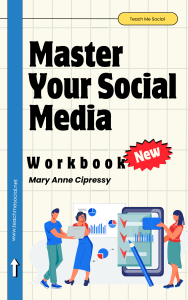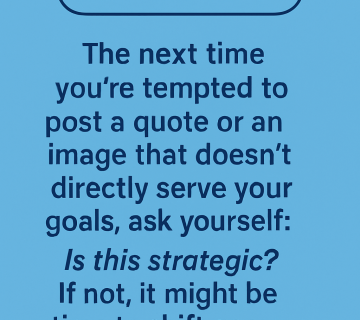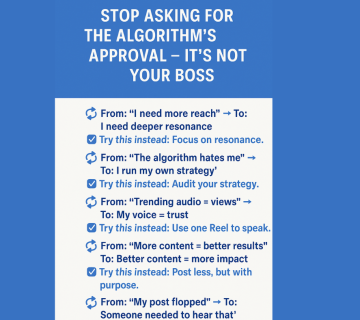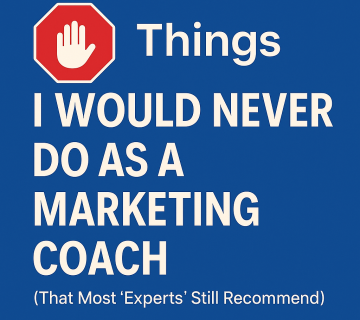Content Marketing: Your Small Business’s Secret Weapon
In today’s digital world, social media is a goldmine for small businesses. It’s where you can connect with your audience, build relationships, and ultimately, drive sales. But simply posting updates isn’t enough. To truly stand out, you need a powerful strategy: content marketing.
Content marketing isn’t just about creating random posts; it’s about crafting valuable, engaging content that resonates with your target audience. Think of it as building a relationship with your customers by providing them with helpful information, entertaining stories, and insightful perspectives. It’s about attracting them to you, not the other way around.
Why is Content Marketing Crucial for Small Businesses?
- Builds Trust and Credibility: Sharing valuable content positions you as an expert in your field. When you consistently provide helpful information, people start to trust you and your brand.
- Increases Brand Awareness: Engaging content gets shared, liked, and commented on, expanding your reach and introducing your business to new potential customers.
- Drives Traffic to Your Website: By including links to your website in your content, you can drive traffic and encourage visitors to explore your products or services.
- Cost-Effective Marketing: Compared to traditional advertising, content marketing is a much more affordable way to reach your target audience.
- Improves SEO: High-quality content helps boost your search engine rankings, making it easier for potential customers to find you online.
How to Use Content Marketing Effectively on Social Media:
-
Know Your Audience: Before creating any content, understand your target audience. What are their interests, needs, and pain points? What kind of content do they enjoy consuming? The more you know, the better you can tailor your content.
-
Choose the Right Platforms: Don’t try to be everywhere at once. Focus on the social media platforms where your target audience spends their time. Are they on Instagram, Facebook, TikTok, or LinkedIn?
-
Create a Content Calendar: Plan your content in advance to maintain consistency. A content calendar helps you organize your posts and ensures you’re sharing a variety of content types.
-
Vary Your Content: Mix things up to keep your audience engaged. Here are some examples:
- Educational Content: Share tips, tutorials, and how-to guides related to your industry. Example: A local bakery could post a video tutorial on how to decorate cupcakes.
- Entertaining Content: Share funny memes, behind-the-scenes glimpses of your business, or lighthearted stories. Example: A small bookstore could share a funny meme about the struggles of being a bookworm.
- Inspirational Content: Share motivational quotes, customer success stories, or stories about overcoming challenges. Example: A fitness studio could share a before-and-after photo of a client who achieved their fitness goals.
- Promotional Content: While the focus shouldn’t be solely on promotion, it’s okay to occasionally share information about your products or services, special offers, or upcoming events. Example: A clothing boutique could post about a new arrival of summer dresses.
- Behind-the-Scenes Content: Give your audience a glimpse into the inner workings of your business. This helps humanize your brand and build connection. Example: A coffee shop could share a photo of their baristas preparing a special latte.
- User-Generated Content: Encourage your customers to share their experiences with your business and repost their content on your social media pages. This builds community and social proof. Example: A restaurant could repost a photo of a customer enjoying their meal.
-
Engage with Your Audience: Respond to comments and messages, ask questions, and run polls. Show your audience that you value their input and are listening to them.
-
Use High-Quality Visuals: Eye-catching images and videos are essential for grabbing attention on social media. Invest in good photography or graphic design to make your content stand out.
-
Track Your Results: Monitor your social media analytics to see what type of content performs best. This will help you refine your strategy and create even more effective content in the future.
Example: A Local Coffee Shop
A local coffee shop can use content marketing on social media in many ways:
- Instagram: Post beautiful photos of their specialty drinks, latte art, and cozy cafe atmosphere. Share behind-the-scenes videos of their baristas at work. Run contests for free coffee.
- Facebook: Share blog posts about coffee brewing tips, recipes using coffee, and the history of coffee. Post about upcoming events, like live music nights. Engage with customers in the comments.
- TikTok: Create short, engaging videos showcasing their unique coffee blends, fun drink recipes, or day-in-the-life of a barista.
By consistently creating valuable and engaging content, the coffee shop can build a loyal following, attract new customers, and establish itself as a beloved community hub.
Content marketing is a long-term game, but the payoff is well worth the effort. By focusing on providing value to your audience, you can build trust, establish your brand, and achieve sustainable growth for your small business.
 Ready to take your social media to the next level? This “Master Your Social Media in 90 Days” Workbook is your key to unlocking the secrets of engaging content, strategic planning, and measurable results. Stop spinning your wheels and start building the social media presence your business deserves. Grab your copy today and let’s get started! Buy today at WORKBOOK
Ready to take your social media to the next level? This “Master Your Social Media in 90 Days” Workbook is your key to unlocking the secrets of engaging content, strategic planning, and measurable results. Stop spinning your wheels and start building the social media presence your business deserves. Grab your copy today and let’s get started! Buy today at WORKBOOK




